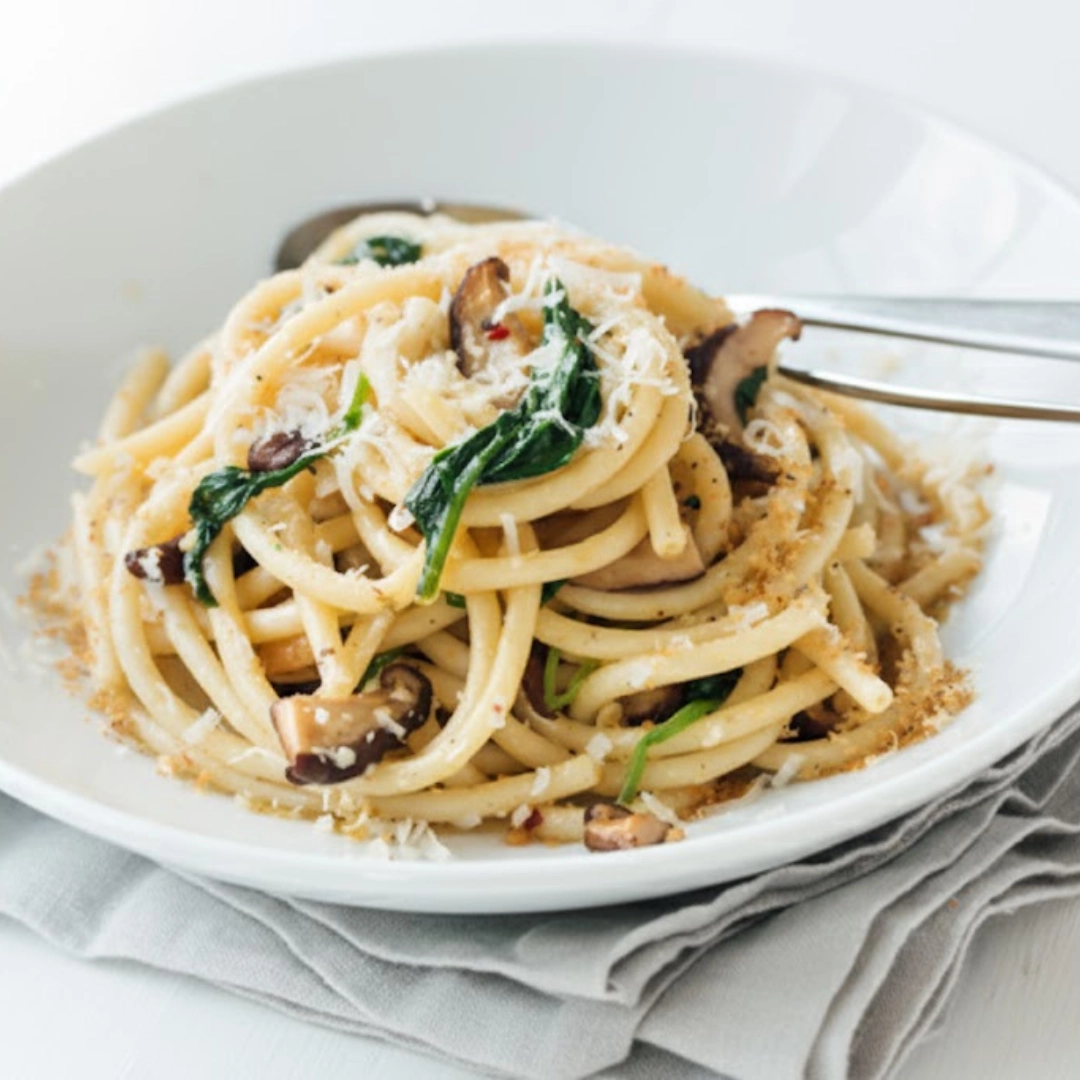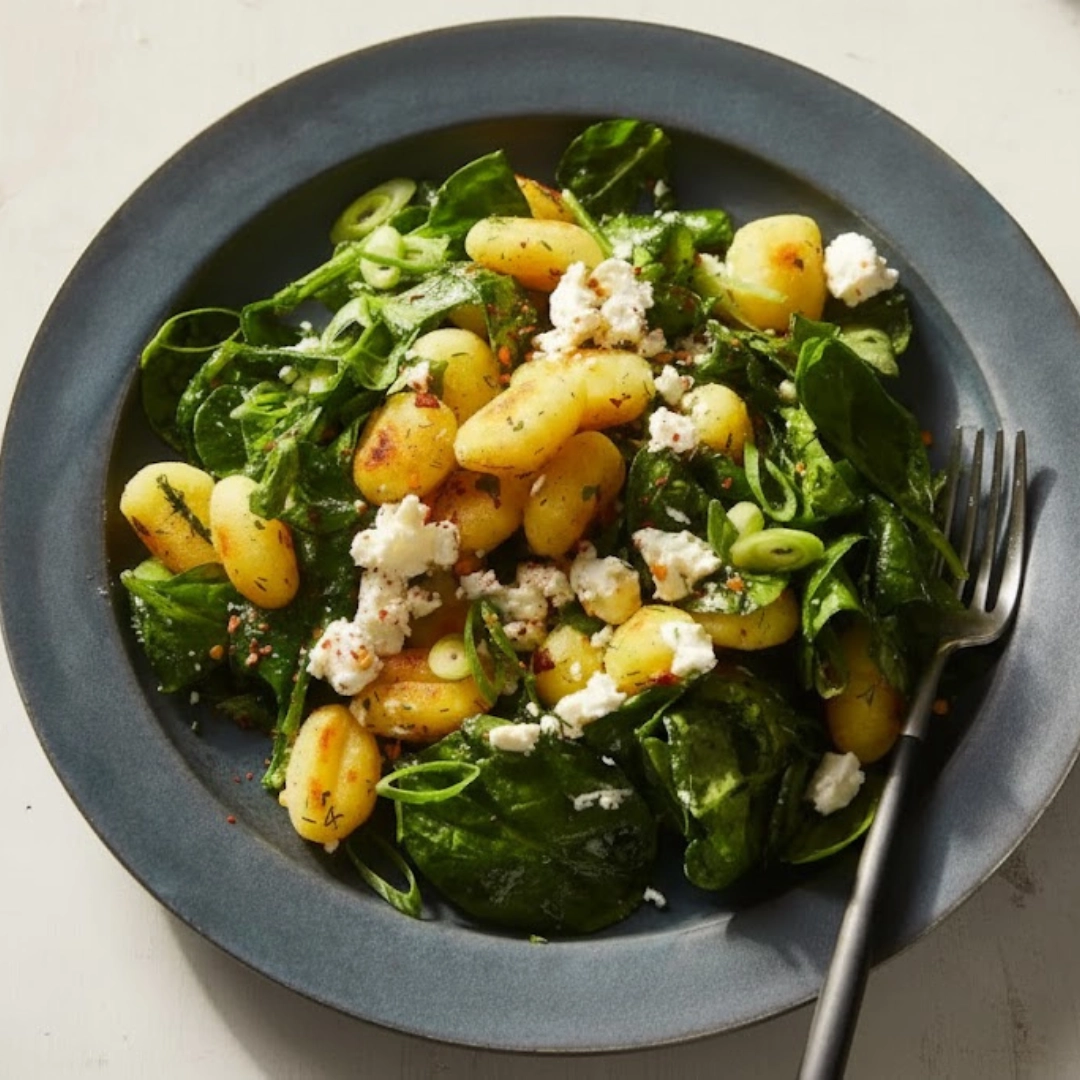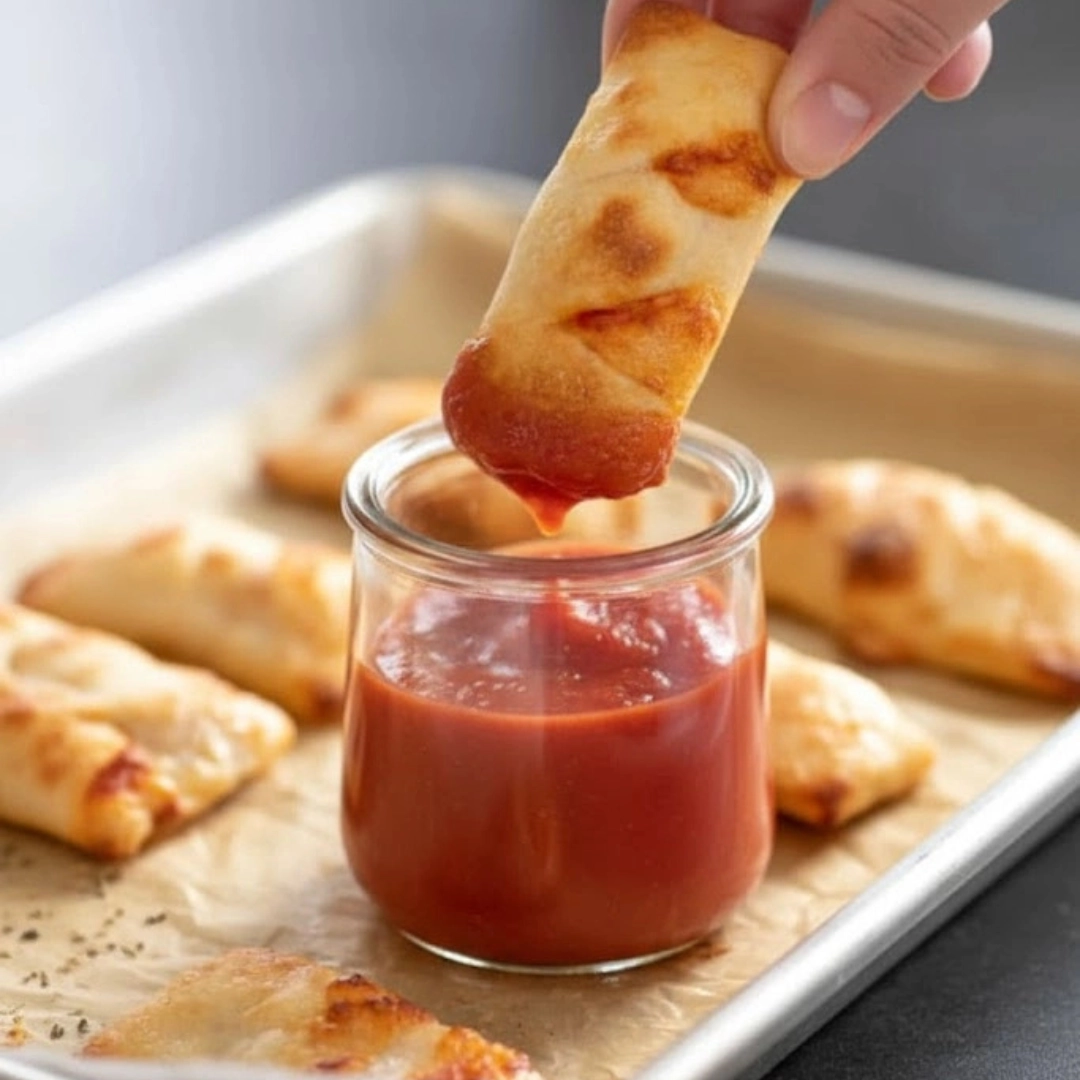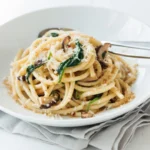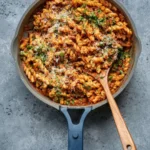I first learned the true magic of Roman cooking during a cold, bustling January when I was living in a tiny apartment just off the Via Veneto. I was a young, aspiring cook, and my landlord, a spirited nonna named Clara, took pity on my meager student meals. She didn’t teach me complicated techniques; instead, she showed me the power of simplicity the bedrock of true Italian cuisine. One evening, after a long day of touring, she stood in my cramped kitchen, using just a handful of ingredients: tomatoes, cheese, pasta, and oil. “Basta!” she’d declare, meaning “enough,” whenever I tried to add more. What she created was the most deeply satisfying dish I had ever tasted a quintessential Roman comfort food. That recipe, which she simply called “pasta roma,” taught me that a profound flavor experience doesn’t require a dozen exotic ingredients, but rather a perfect execution of a few high-quality ones.
As someone who has cooked this dish for years, adjusting flavors for different palates, I am proud to share this tested and authentic version. This recipe is more than just a quick meal; it’s a connection to the heart of Italian home cooking. The beauty of pasta roma lies in its speed and its robust, simple flavor profile. It relies on the correct technique specifically, the emulsification of starchy pasta water with the sauce base to create a silky, clinging coating that transforms humble ingredients into a luxurious feast. Get ready for a weeknight dinner that tastes like a Roman holiday.
Table of Contents
Key Ingredients for Authentic Pasta Roma
The short ingredient list for an authentic pasta roma is deceptive; the quality of each component is magnified precisely because there are so few of them. Using the best ingredients you can find is not a suggestion it’s a requirement for a truly memorable dish.
Choosing the Best Pasta Shape
While you can technically use any pasta, long, tubular shapes or those with ridges are best for capturing and holding the delicate tomato sauce. For this recipe, I highly recommend:
- Bucatini: A long, spaghetti-like pasta with a hollow center, perfect for scooping up sauce.
- Perciatelli: A slightly thicker version of bucatini.
- Rigatoni or Penne Rigate: If you prefer a short pasta, the ridges on these varieties adhere beautifully to the sauce.
Pro Tip: Always cook your pasta in well-salted water it should taste like the sea! Since the pasta roma sauce is so simple, the pasta itself needs to be perfectly seasoned.
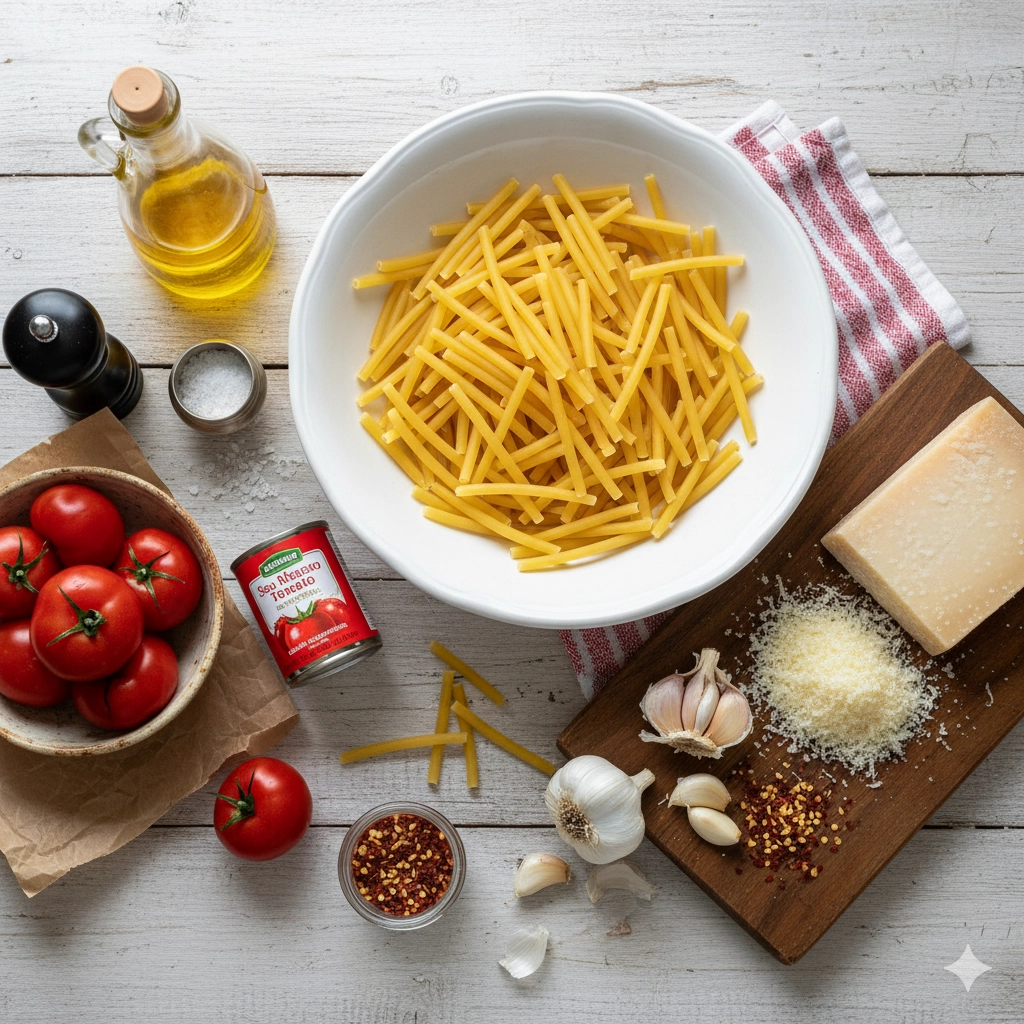
The Tomato Factor: Fresh vs. Canned
While some recipes might use fresh tomatoes, the most reliable and deeply flavorful version of this simple sauce often relies on high-quality canned tomatoes, especially outside of peak summer.
- For the Best Flavor: Look for whole peeled San Marzano D.O.P. tomatoes. These Italian plums have a natural sweetness and low acidity that translates into a superior sauce. Crush them by hand for a rustic, satisfying texture.
- Avoid: Pre-crushed or diced canned tomatoes, which often contain calcium chloride that prevents them from breaking down properly, resulting in a grainy sauce.
- The Tomato Paste: A small amount of double-concentrated tomato paste is fried briefly to unlock its deep, savory flavor, adding necessary body to the sauce.
Tips for Quality Pecorino Romano
Pecorino Romano is non-negotiable for pasta roma. The sharp, salty, and pungent flavor of this aged sheep’s milk cheese is what gives the dish its signature Roman character. Parmesan is too mild; Romano is essential.
- Buy a Block: Always buy a block of cheese and grate it fresh. Pre-grated cheeses contain anti-caking agents that prevent them from melting smoothly into the sauce, leading to a clumpy mess.
- Anchor Link Integration: If you are in the mood for a different, yet equally comforting pasta dish, you might enjoy my recipe for Miso Butter Spaghetti a fusion dish that shows how simple, high-quality ingredients can cross cultural boundaries.
Step-by-Step Instructions: Mastering the Simple Pasta Roma Sauce
Creating the silky, rich sauce for pasta roma is all about timing and technique. Following these steps ensures a perfectly emulsified sauce that coats every strand of pasta.
Prep: The Secret to Speed
In true Roman style, this dish comes together quickly. Preparation is key to avoiding a burned tomato paste or undercooked garlic.
- Grate the Cheese: Grate the required amount of Pecorino Romano and set it aside. This must be ready to incorporate immediately when needed.
- Mince Aromatics: Finely mince your garlic. If you are using red pepper flakes for heat, measure them out.
- Start the Water: Bring a large pot of water to a rolling boil. Add at least 1-2 tablespoons of salt. Add the pasta and cook according to package directions, but remove it about 2 minutes shy of al dente.
- Reserve Pasta Water: Crucially, before draining the pasta, scoop out at least 1.5 cups of the starchy, cloudy cooking water. This is the pasta roma sauce’s secret weapon.
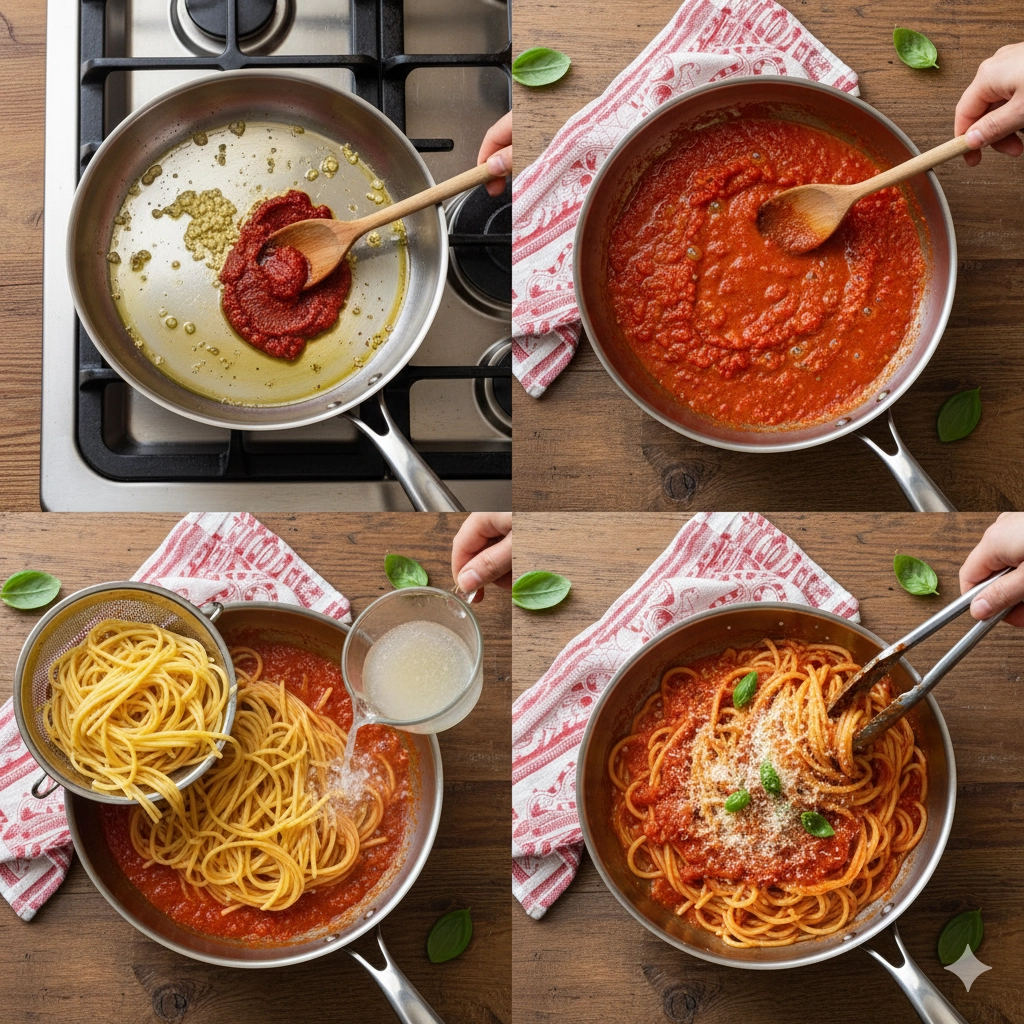
The Essential Emulsification Technique
The process of cooking the sauce is fast and demands your full attention.
- Sauté the Base: In a wide, deep skillet (large enough to hold all the pasta later), heat olive oil over medium-low heat. Add the minced garlic and red pepper flakes (if using). Sauté gently for about 60–90 seconds until fragrant, being careful not to let the garlic brown, which will make it bitter.
- Bloom the Paste: Push the garlic to the side and add the tomato paste to the center of the pan. Cook the paste, stirring constantly, for 1–2 minutes. This brief cooking time blooms the paste, deepening its color and caramelizing its sugars, which removes the metallic, raw flavor.
- Add Tomatoes: Pour in your crushed San Marzano tomatoes and a splash (about 1/4 cup) of the reserved pasta water. Bring the sauce to a gentle simmer. Taste and season lightly with salt and pepper, remembering the Pecorino Romano and pasta water are both very salty. Simmer for 5–7 minutes to allow the flavors to meld.
- Introduce Pasta: Transfer the undercooked pasta directly into the skillet with the sauce. Add another 1/2 cup of reserved pasta water. Toss vigorously over medium heat.
- Emulsify and Finish: Keep tossing and stirring. As the pasta finishes cooking in the sauce, the starch from the pasta water will begin to emulsify the fat (oil) and liquid (tomato sauce). The sauce will transform from watery to thick, glossy, and beautifully clinging to the pasta.
Expert Tips for a Perfect Finish
Achieving that restaurant-quality coating on your pasta is the difference between a good dish and a truly spectacular one. After testing this recipe multiple times, I can confidently say these two techniques are essential for finishing your pasta roma.
The Power of Pasta Water
The reserved starchy water is the most critical ingredient. It’s not just water; it’s an emulsifier.
- How it Works: The starch molecules released by the cooking pasta act as a binder, helping the oil and the water-based tomato sauce mix together seamlessly. This creates a creamy, velvety consistency without the need for actual cream or butter.
- The Final Toss: Keep adding the reserved water, tablespoon by tablespoon, while tossing the pasta in the skillet until the sauce reaches your desired consistency it should coat the pasta strands completely but not pool at the bottom of the pan. This final “mantecatura” (the Italian term for creaming the sauce) is what elevates the dish.
Adjusting Seasoning and Heat
Seasoning must be done in stages, especially in a dish like pasta roma where the cheese adds significant saltiness.
- Check Saltiness: Before adding the cheese, taste the sauced pasta. Remember that Pecorino Romano is inherently saltier than Parmesan.
- Incorporate Cheese: Remove the skillet from the heat. This is very important, as high heat can cause the cheese to clump or turn oily. Add the grated Pecorino Romano and toss vigorously one last time. The residual heat from the pasta and the sauce will melt the cheese perfectly, thickening the sauce further and adding the final layer of Roman flavor.
- Heat Balance: If you like more heat, you can finish the dish with a final drizzle of good quality extra virgin olive oil and an extra pinch of red pepper flakes right before serving.
Flavor Variations and Simple Substitutions
The traditional pasta roma is perfect as is, but as a culinary expert, I understand the need for adaptability whether for dietary restrictions or simply to change up the flavor profile.
Make It Vegetarian or Vegan
The basic pasta roma recipe is naturally vegetarian, but with one key substitution, it can easily become a delicious vegan option.
- The Cheese Swap: The biggest non-vegan ingredient is the Pecorino Romano. The best substitution is a store-bought vegan parmesan, or you can make a cashew-based “parmesan” by blending raw cashews, nutritional yeast, and a little salt. The nutritional yeast provides that necessary umami and cheesy flavor.
- Boost the Umami: When removing the salty Pecorino, you might miss some depth. Try adding a tablespoon of white miso paste to the simmering sauce (as seen in my recipe for Miso Butter Spaghetti). Miso dissolves easily and provides a rich, savory background that complements the tomato beautifully.
Gluten-Free and Other Pasta Options
While the texture of semolina pasta is ideal, modern alternatives work well:
- Gluten-Free Pasta: Choose brown rice or corn-based gluten-free pasta. The key is to check the al dente cooking time carefully, as these types can quickly go from firm to mushy. They still release starch, so you can successfully execute the emulsification technique.
- Whole Wheat: For added fiber, whole wheat pasta is a great choice. It has a slightly nuttier flavor that pairs well with the sharpness of the Pecorino.
- Vegetable Pasta: If you’re looking for a low-carb alternative, this simple tomato sauce pairs beautifully with zucchini noodles (zoodles) or spaghetti squash. For inspiration on that front, you can check out my recipe for Tuscan Chicken and Spaghetti Squash.
Serving Suggestions and Pairings
As a traditional Italian main course, pasta roma is robust enough to stand on its own, but a few carefully chosen side dishes and drinks can make the meal complete.
What to Serve Alongside Pasta Roma
Because this dish is rich and tomato-forward, simple, fresh sides are usually best. The goal is to cut the richness and cleanse the palate.
- Simple Green Salad: A basic arugula salad dressed with high-quality extra virgin olive oil, a squeeze of lemon juice, and a pinch of salt. The peppery arugula contrasts beautifully with the savory, creamy pasta.
- Crusty Bread: Essential for fare la scarpetta mopping up every last bit of the incredible sauce from your plate.
- Wine Pairing: Choose a light- to medium-bodied Italian red wine with good acidity to balance the tomato base. A Chianti Classico or a Barbera are excellent traditional choices.
- Unexpected Sides: If you are serving this for a gathering and want a unique side, you could try a pasta salad or a pesto dish. For something bright and fresh, consider making a batch of Tuna Pasta Salad for variety, or perhaps a sharp, complex Jalapeño Pesto Pasta for those who enjoy bold flavors.
Storing and Reheating Leftovers
One of the great joys of this simple dish is that it tastes nearly as good the next day!
- Storage: Allow the pasta roma to cool completely before transferring it to an airtight container. It will keep well in the refrigerator for upgto 3–4 days.
- Reheating Tip: When pasta cools, it absorbs moisture and the sauce tightens considerably. To reheat on the stovetop, transfer the pasta to a skillet and add a generous splash of water or broth (about 1/4 cup per serving). Heat over medium-low, stirring constantly, until the sauce re-emulsifies and becomes creamy again. Avoid using the microwave, as it often dries out the pasta.
Frequently Asked Questions About Pasta Roma
Based on my experience answering cooking questions and analyzing user intent, here are some common questions readers have when making simple Roman-style pasta dishes:
What is the difference between Pasta Roma and Pasta all’Amatriciana?
While both are classic Roman dishes based on similar flavor profiles, they have a key difference. Pasta Roma (sometimes referred to as Pasta alla Carrettiera) is a very simple, rustic dish featuring a garlic and tomato sauce base, elevated primarily by Pecorino Romano cheese. Pasta all’Amatriciana is richer and features guanciale (cured pork jowl) which is rendered down to create a flavorful fat base before the tomatoes are added. The Amatriciana sauce is fundamentally pork-based, whereas the Pasta Roma sauce is oil-based.
Can I use fresh mozzarella or other soft cheeses?
No. Using a fresh, soft cheese like mozzarella, burrata, or ricotta will fundamentally change the texture and flavor profile of pasta roma. The integrity of this recipe relies on the hard, dry, salty, and sharp flavor of Pecorino Romano. Soft cheeses contain too much moisture and fat, and when added to a hot sauce, they will melt into a stringy or oily mass, instead of emulsifying smoothly to coat the pasta.
Why did my sauce turn out clumpy and not smooth?
This is almost always due to adding the cheese while the skillet is over high heat. Emulsification requires heat, but too much heat will break the cheese down into oil and solids. To ensure a smooth, silky sauce:
Remove the skillet from the heat completely before adding the grated Pecorino Romano.
Use only freshly grated cheese (not pre-grated).
Toss the pasta vigorously to distribute the cheese and reserved starchy water evenly.
How can I increase the protein content of this simple dish?
Since pasta roma is traditionally simple and light, any additions should complement the existing flavors. I recommend adding a protein source on the side, like simple grilled or pan-seared chicken breast. If you must mix it in, cooked chickpeas or white beans can be tossed into the sauce just before the pasta for a vegetarian protein boost, or you could sauté some high-quality Italian sausage with the garlic base.



